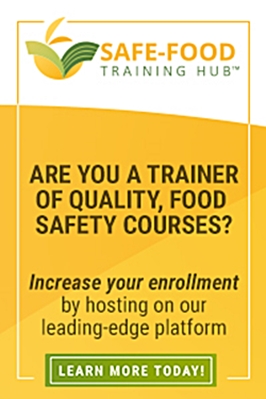Best Practices for Leveraging a Gap Analysis to Streamline Your Compliance Process
By Neal White
As we all know, any facility that manufactures, processes, packs, or holds food for sale in the United States must comply with the Food Safety Modernization Act (FSMA) rules. But it’s tough to meet FSMA’s minimum requirements and many manufacturers and processors are not yet prepared to comply.
The most effective way to ensure FSMA compliance is to start with a gap analysis. Sometimes referred to as a gap assessment, this technique is used to identify what action steps are required in order to move from the current level of business activity to regulatory or standard compliance.

Gap analyses can also help determine the most economical path to the final destination. They force a company to bridge the gaps between how a company currently operates and how it will need to operate. The results of the analysis represent the destination, the path to be taken, and the key stops along the way to measure levels of success. They require a company to:
– Identify the key characteristics or attributes of the present situation (such as existing prerequisite and food safety prams, product attributes, personnel competencies, and overall performance level)
– Define regulatory rules which will need to be consistently met
– Highlight the gaps that exist and need to be filled
– Determine corrective actions based on the gaps (where bridges need to be built) and
– Establish checkpoints using SMART techniques to measure success and re-evaluate the path necessary to reach the goal
With the introduction of FSMA, the Food and Drug Administration (FDA) recognized a global shift toward proactive program development and international certification programs that validate and verify the efficacy of prerequisite and food safety programs. When developing FSMA, the FDA made an intentional effort to encourage the development of programs that aid in the prevention of food safety incidents, rather than simply respond after the fact.
Key points to remember include the following best practices:
– Develop improvement steps based on the gaps between where a company is and where it needs to get to in order to meet regulatory requirements.
– Establish measures that are simple and easily monitored. This allows for achievable short-term successes and keeps momentum while fostering a cultural shift from immediate crisis response to continuous program monitoring.
– Design progress assessments in quantifiable terms. Diagrams, Spider Web chart analyses, and Pareto charts provide clear progress towards the ultimate goal.
A gap analysis provides a modern-day roadmap that a food manufacturer, processor, packer, or holder can use to determine clear pathways and bridges to achieve safe food products from farm to fork. The insights it delivers are priceless.
About the Author
Neal White, Global Quality Manager GMPs, joined AIB International in 2001. White provides GMP inspections and is also licensed to provide GFSI certification audits.

Categories: Food Safety Standards, HACCP, Regulatory Compliance
Tags: food safety compliance , food safety programs , gap analysis , safe food products



